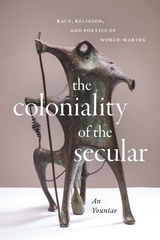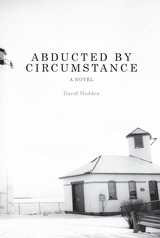
“Abducted by Circumstance is a thrilling crime story, a dark and complex psychological study, a rich contemplation on contemporary life. It is also a masterful moral drama about the centuries-old conflicts that arise from the juxtaposition of the flesh and spirit.”
—Allen Wier, author of Tehano
“David Madden continues to push the envelope of literary fiction in subtle and profoundly sophisticated ways. Abducted by Circumstance is a quirky, utterly compelling novel in pieces that in its very structure speaks to the work’s twenty-first-century theme: how do we find connection in a fragmented world? In this new book Madden is at the height of his considerable power.”
—Robert Olen Butler
In Abducted by Circumstance, David Madden offers his readers a unique experience simultaneously terrifying and exhilarating.
Carol Seaborg makes a risky visit in zero weather to a lighthouse near her house in The Thousand Islands of New York on the Canadian border. A self-confident, attractive woman of about 55 suddenly appears on the observation deck looking out over frozen Lake Ontario. Carol admires the woman as her ideal.
Suddenly, the woman disappears, apparently abducted by a serial rapist and killer, stimulating in Carol an immediate empathy that, enhanced by the power of her imagination, is so great as to make her unique. Carol projects her own emotions, imagination, and intellect into Glenda’s experience.
To render that empathy and imagination, Madden channels everything that the people around her say and do through Carol’s perceptions so intimately that he shifts frequently and without transition into her thoughts, which focus mostly on the abducted woman, whose name newscasters reveal is Glenda Hamilton.
As Carol imagines Glenda gradually coping with her abductor, she speaks directly, sometimes out loud, to her, encouraging her, advising her, expressing fear for her.
If Carol’s external experiences are passive almost to paralysis, her memories reveal that her life has been full of more venturesome relationships and events (she once rode across Greece alone on a bicycle) than most wives and mothers in their late thirties have. Carol’s emotions and imagination are highly charged and exquisitely presented.
The circumstances and relationships of her past and present predispose Carol to empathize with Glenda. Carol’s own life among a crude, remote second husband, a somewhat estranged adolescent son, a bright five-year-old daughter, a father who is a rather cold philosophy teacher, and the strong spiritual presence of her mother who committed suicide, is simple and routine. The events involving Glenda’s disappearance take place during the week before Carol’s second surgery for breast cancer.
Gradually, as she takes late night drives with her little girl, visits her ex-boyfriend’s father in a nursing home, drives by her ex-lover’s house and business, and visits the campus where her father is a prominent teacher, the reader realizes, some pages before Carol herself does, that she has been abducted by the circumstances of her life.
Although it is grounded in the realistic detail of everyday life, Abducted by Circumstance is unique in conception, style, and characterization. Madden immerses the reader in an extraordinarily rich and unforgettable psychological experience.
Thoroughly absorbing from start to finish, Abducted by Circumstance explores Carol’s troubled psyche with the rare precision and insight that have long distinguished David Madden’s fiction.
Since 1961, each of David Madden’s highly praised novels and two books of short stories has had some quality of uniqueness, among them Cassandra Singing, Sharpshooter: A Novel of the Civil War, Bijou, and The Suicide’s Wife. Twice nominated for the Pulitzer Prize, David Madden received the Robert Penn Warren Award from the Fellowship of Southern Writers.


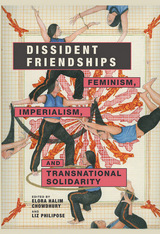
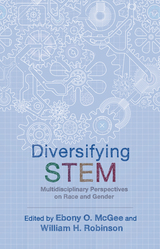
Research frequently neglects the important ways that race and gender intersect within the complex structural dynamics of STEM. Diversifying STEM fills this void, bringing together a wide array of perspectives and the voices of a number of multidisciplinary scholars. The essays cover three main areas: the widely-held ideology that science and mathematics are “value-free,” which promotes pedagogies of colorblindness in the classroom as well as an avoidance of discussions around using mathematics and science to promote social justice; how male and female students of color experience the intersection of racist and sexist structures that lead to general underrepresentation and marginalization; and recognizing that although there are no quick fixes, there exists evidence-based research suggesting concrete ways of doing a better job of including individuals of color in STEM. As a whole this volume will allow practitioners, teachers, students, faculty, and professionals to reimagine STEM across a variety of educational paradigms, perspectives, and disciplines, which is critical in finding solutions that broaden the participation of historically underrepresented groups within the STEM disciplines.
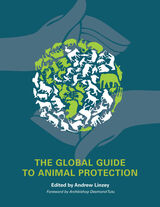


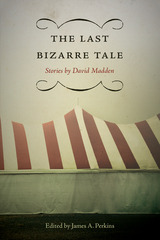
Wife, Abducted by Circumstance, and the recent London Bridge in Plague and Fire, David
Madden has been publishing short stories for all six decades of his active career. The Last
Bizarre Tale consists of works that appeared in journals but that have not appeared together
as a collection.
Madden used two stories, “The Singer” and “Second Look Presents: the Rape of an
Indian Brave,” as chapters in his 1980 novel On the Big Wind. “The Headless Girl’s Mother”
was first published as a chapter in a serialized novel entitled Hair of the Dog. Two other stories
developed out of longer versions of Madden’s novels. “A Demon in My View” is part of
a sequel, not yet published, to Bijou.
All of the stories in David Madden’s third collection are distinguished by variety of content
and by shifting styles and often innovative techniques. They are to varying degrees and
in various ways bizarre in their characters and their relationships, in the kinds of internal
and external conflicts, and in locales and themes. The title story, The Last Bizarre Tale, involving
a corpse that has hung on a hook in a funeral home garage for decades, is evocative
of Poe and, in its dark, grotesque humor, Flannery O’Connor and Carson McCullers.
“Process is as important as product to David Madden,” writes editor James Perkins,
“and one can learn as much about the process of writing as about the human condition by a
careful reading of these stories.”
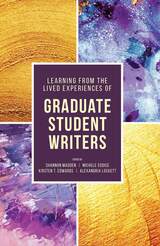
Learning from the Lived Experiences of Graduate Student Writers is a timely resource for understanding and resolving some of the issues graduate students face, particularly as higher education begins to pay more critical attention to graduate student success. Offering diverse approaches for assisting this demographic, the book bridges the gap between theory and practice through structured examination of graduate students’ narratives about their development as writers, as well as researched approaches for enabling these students to cultivate their craft.
The first half of the book showcases the voices of graduate student writers themselves, who describe their experiences with graduate school literacy through various social issues like mentorship, access, writing in communities, and belonging in academic programs. Their narratives illuminate how systemic issues significantly affect graduate students from historically oppressed groups. The second half accompanies these stories with proposed solutions informed by empirical findings that provide evidence for new practices and programming for graduate student writers.
Learning from the Lived Experiences of Graduate Student Writers values student experience as an integral part of designing approaches that promote epistemic justice. This text provides a fresh, comprehensive, and essential perspective on graduate writing and communication support that will be useful to administrators and faculty across a range of disciplines and institutional contexts.
Contributors: Noro Andriamanalina, LaKela Atkinson, Daniel V. Bommarito, Elizabeth Brown, Rachael Cayley, Amanda E. Cuellar, Kirsten T. Edwards, Wonderful Faison, Amy Fenstermaker, Jennifer Friend, Beth Godbee, Hope Jackson, Karen Keaton Jackson, Haadi Jafarian, Alexandria Lockett, Shannon Madden, Kendra L. Mitchell, Michelle M. Paquette, Shelley Rodrigo, Julia Romberger, Lisa Russell-Pinson, Jennifer Salvo-Eaton, Richard Sévère, Cecilia D. Shelton, Pamela Strong Simmons, Jasmine Kar Tang, Anna K. Willow Treviño, Maurice Wilson, Anne Zanzucchi
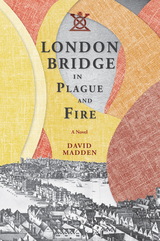
For more than two thousand years, Old London Bridge evolved through many fragile wooden forms until it became the first bridge built of stone since the Roman invaders. With over two hundred houses and shops built directly upon the bridge, it was a wonder of the world until it was dismantled in 1832.
In this stunningly original novel, Old London Bridge is as much a living, breathing character as its architect, the priest Peter de Colechurch, who began work on it in 1176, partly to honor Archbishop Thomas à Becket, murdered in Canterbury Cathedral. In 1665, the year of the Great Plague, Peter’s history is unknown, but Daryl Braintree, a young poet living on the bridge, resurrects him through inspired flights of imagination. As Daryl chronicles the history of the bridge and composes poems about it, he reads his work to his witty mistress, who prefers making love.
Among other key characters is Lucien Redd, who as a boy was sexually brutalized by both Puritans and Cavaliers during the English Civil War before being kidnapped off London Bridge onto a merchant ship. Thus traumatized, he aspires to become Lucifer’s most evil disciple. Twenty years later, young Morgan Wood is forced into seafaring service to pay off his father’s debts; and, compelled by obsessive nostalgia for his early life on the bridge, he keeps a journal. Joining Morgan aboard ship, Lucien “befriends” him—to devastating effect.
The shops and houses on the bridge survive both the Great Plague and Great Fire, believed to be God’s wrath upon sinful London. Fearing that God may next destroy the bridge and its eight hundred denizens, seven of its merchant leaders revert to a pagan appeasement ritual by selecting one of their virgin daughters for sacrifice. To enact their plan, they hire Lucien, who has returned to the bridge to burn it out of pure meanness. But as Lucien discovers, the chosen victim may be more Lucifer’s favorite than he is.
Like his creation Daryl Braintree, David Madden employs diverse innovative ways to tell this complex, often shocking, but also lyrical story. The author of ten novels—including The Suicide’s Wife, Bijou, and most recently, Abducted by Circumstance and Sharpshooter—Madden has, with London Bridge in Plague and Fire, given us the most ambitious and imaginative work of his distinguished career.

For more than two thousand years, Old London Bridge evolved through many fragile wooden forms until it became the first bridge built of stone since the Roman invaders. With over two hundred houses and shops built directly upon the bridge, it was a wonder of the world until it was dismantled in 1832.
In this stunningly original novel, Old London Bridge is as much a living, breathing character as its architect, the priest Peter de Colechurch, who began work on it in 1176, partly to honor Archbishop Thomas à Becket, murdered in Canterbury Cathedral. In 1665, the year of the Great Plague, Peter’s history is unknown, but Daryl Braintree, a young poet living on the bridge, resurrects him through inspired flights of imagination. As Daryl chronicles the history of the bridge and composes poems about it, he reads his work to his witty mistress, who prefers making love.
Among other key characters is Lucien Redd, who as a boy was sexually brutalized by both Puritans and Cavaliers during the English Civil War before being kidnapped off London Bridge onto a merchant ship. Thus traumatized, he aspires to become Lucifer’s most evil disciple. Twenty years later, young Morgan Wood is forced into seafaring service to pay off his father’s debts; and, compelled by obsessive nostalgia for his early life on the bridge, he keeps a journal. Joining Morgan aboard ship, Lucien “befriends” him—to devastating effect.
The shops and houses on the bridge survive both the Great Plague and Great Fire, believed to be God’s wrath upon sinful London. Fearing that God may next destroy the bridge and its eight hundred denizens, seven of its merchant leaders revert to a pagan appeasement ritual by selecting one of their virgin daughters for sacrifice. To enact their plan, they hire Lucien, who has returned to the bridge to burn it out of pure meanness. But as Lucien discovers, the chosen victim may be more Lucifer’s favorite than he is.
Like his creation Daryl Braintree, David Madden employs diverse innovative ways to tell this complex, often shocking, but also lyrical story. The author of ten novels—including The Suicide’s Wife, Bijou, and most recently, Abducted by Circumstance and Sharpshooter—Madden has, with London Bridge in Plague and Fire, given us the most ambitious and imaginative work of his distinguished career.
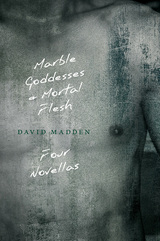
The Hero and the Witness is a harrowing and comic story of nineteen-year-old Lucius’s ordeal as a merchant seaman caught in the crossfire between an enigmatic scapegoat and a violent crew en route to Chile. In To Play the Con, Lucius, now a teacher and a first-time novelist, cons his little brother’s six small-town victims into accepting restitution for passing bad checks, a scam their older brother taught him and that may send him to the chain gang. Lucius works another con in Nothing Dies, but Something Mourns by persuading an ancient lady in a mountain town to tell him the romantic story of her brief love affair with Jesse James. In the innovative novella Marble Goddesses and Mortal Flesh, Lucius, now middle-aged and a successful novelist, buys the derelict Bijou Theater where he was a very young usher and becomes immersed to the brink of psychosis in memories of the immortal movie goddesses of the 40s and the mortal girls of his youth.
The novella is the perfect medium for this wide-ranging author to explore the power of the imagination and of oral storytelling in the lives of his characters. Madden’s unmatched scope in this collection could draw comparisons to Joseph Conrad, Henry James, Thomas Wolfe, and James M. Cain equally well.
Like Lucius, a native of Knoxville, DAVID MADDEN was an adolescent usher in the
1940s, a Merchant Mariner in the 1950s, and his two brothers were con men in their youth. He became a teacher in 1957, retiring in 2008 as LSU’s Robert Penn Warren Professor of Creative Writing, emeritus. Living now in Black Mountain, North Carolina, he has nearly finished a memoir recounting his youthful experiences in the U.S. Army.

The novella is the perfect medium for this wide-ranging author to explore the power of the imagination and of oral storytelling in the lives of his characters. Madden’s unmatched scope in this collection could draw comparisons to Joseph Conrad, Henry James, Thomas Wolfe, and James M. Cain equally well.
Like Lucius, a native of Knoxville, DAVID MADDEN was an adolescent usher in the
1940s, a Merchant Mariner in the 1950s, and his two brothers were con men in their youth. He became a teacher in 1957, retiring in 2008 as LSU’s Robert Penn Warren Professor of Creative Writing, emeritus. Living now in Black Mountain, North Carolina, he has nearly finished a memoir recounting his youthful experiences in the U.S. Army.
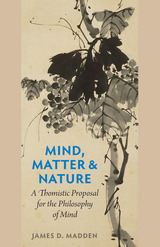
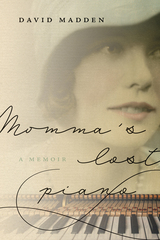
The loss of her piano casts a shadow over Emily’s life in Knoxville, a city she could never love. Throughout the rest of her life, Emily longs to return to Cleveland, where she had an idyllic youth with many boyfriends and girlfriends and was, above all, a good piano student. Her life becomes like that of a nomad, moving from house to house and from job to job.
Her great love of life is expressed by dancing in highway honky-tonks, along with her six beautiful girlfriends. After divorcing her lovable, alcoholic husband, Emily falls deeply in love with troubled married men. She doesn’t enjoy whiskey or smoking, but she’s not a churchgoer. She raises three boys in poverty. A fourth son dies soon after birth. Oldest Dickie becomes a life-long petty conman, but little brother John, known as “Sunshine,” becomes a legendary rescuer of wayward boys and girls. Jerry, the middle brother, becomes a merchant seaman, a soldier, and finally a professor and successful writer.
Rather than a chronological narrative, Madden employs an impressionistic style that enables readers to experience Emily’s memories as he imagines them. In sharply focused scenes, Madden evokes the colorful expressions of the articulate, witty woman he has spent all his life listening to—and this memoir will inspire readers to listen eagerly, too.
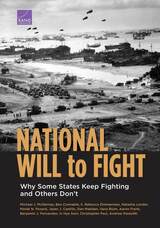

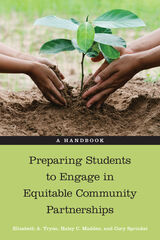
Preparing Students to Engage in Equitable Community Partnerships provides a wealth of valuable resources and activities to help impart ideas of identity, privilege, oppression, bias, and power dynamics to best support students and community in these relationships. Believing that authenticity only comes about in an atmosphere of mutual respect and self-awareness, the authors argue for cultural and intellectual humility.
Each chapter looks at topics and issues through different lenses, complete with underlying theories, and relates those discussions to concrete classroom activities, facilitation strategies, and scholarly frames. In addition, the authors include contributions from a diverse group of practitioners at community colleges, private colleges, historically Black colleges and universities, and minority-serving institutions.
Preparing Students to Engage in Equitable Community Partnerships is a much-needed, comprehensive resource for community-engaged professionals as they prepare students for building relationships when entering a community for learning or research purposes.
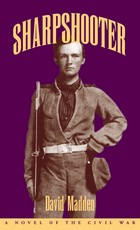
A gripping and thought-provoking work that is unlike any Civil War novel previously written, Sharpshooter takes us into the mind of one of the war’s veterans as he attempts, years after the conflict, to reconstruct his experiences and to find some measure of meaning in them.
A child of the divided East Tennessee mountain region, Willis Carr left home at age thirteen to follow his father and brothers on a bridge-burning mission for the Union cause. Imprisoned at Knoxville, he agreed to join the Confederate army to avoid being hanged and became a sharpshooter serving under General Longstreet. He survived several major battles, including Gettysburg, and eventually found himself guarding prisoners at the infamous Andersonville stockade, where a former slave taught him to read.
After the war, haunted by his memories, Carr writes down his story, revisits the battlefields, studies photographs and drawings, listens to other veterans as they tell their stories, and pores over memoirs and other books. Above all, he embues whatever he hears, sees, and reads with his emotions, his imagination, and his intellect. Yet, even as an old man nearing death, he still feels that he has somehow missed the war, that something essential about it has eluded him. Finally, in a searing moment of personal revelation, a particular memory, long suppressed, rises to the surface of Carr’s consciousness and draws his long quest to a poignant close.
A compelling work of fiction from a writer who is both a gifted novelist and a distinguished student of the Civil War, David Madden’s Sharpshooter invites us to see this signal episode in American history in a new way—to grasp its facts, to imagine what facts cannot convey, and to make the war our own.
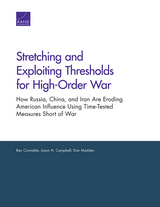
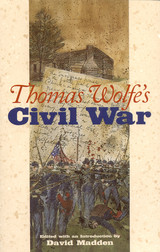
An anthology of Thomas Wolfe’s short stories, novel excerpts, and plays illuminating the Civil War
This collection of Thomas Wolfe’s writings demonstrates the centrality of the Civil War to Wolfe’s literary concerns and identity. From Look Homeward, Angel to The Hill Beyond and The Web and the Rock, Wolfe perpetually returned to the themes of loss, dissolution, sorrow, and romance engendered in the minds of many southerners by the Civil War and its lingering aftermath. His characters reflect time and again on Civil War heroes and dwell on ghostlike memories handed down by their mothers, fathers, and grandfathers. Wolfe and his protagonists compare their contemporary southern landscape to visions they have conjured of its appearance before and during the war, thereby merging the past with the present in an intense way. Ultimately, Wolfe’s prose style—incantatory and rhapsodic—is designed to evoke the national tragedy on an emotional level.
Selections of Wolfe’s writings in this collection include short stories ("Chickamauga," "Four Lost Men," "The Plumed Knight"), excerpts from his novels (O Lost, the restored version of Look Homeward, Angel, The Hills Beyond, and Of Time and the River) and a play, Mannerhouse, edited and introduced by David Madden. Madden, who makes the provocative claim that everything a southern writer writes derives from the Civil War experience, also highlights many issues essential to understanding Wolfe’s absorption with the Civil War.

READERS
Browse our collection.
PUBLISHERS
See BiblioVault's publisher services.
STUDENT SERVICES
Files for college accessibility offices.
UChicago Accessibility Resources
home | accessibility | search | about | contact us
BiblioVault ® 2001 - 2024
The University of Chicago Press



